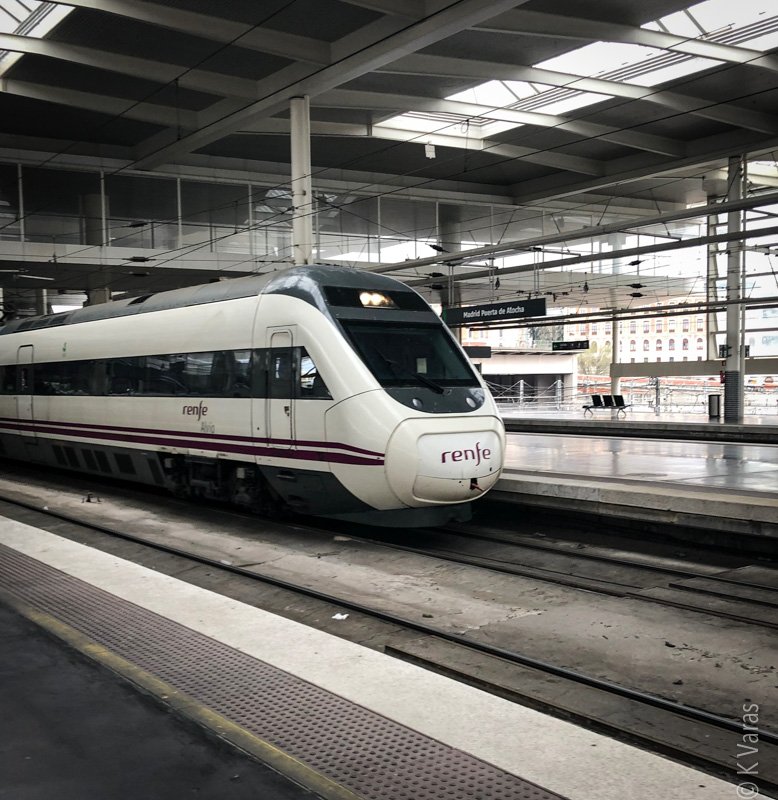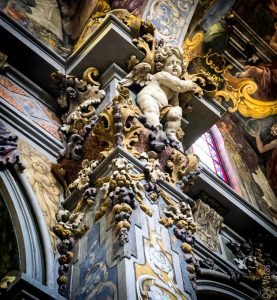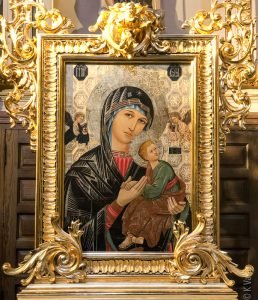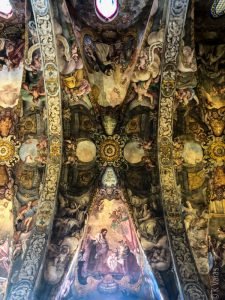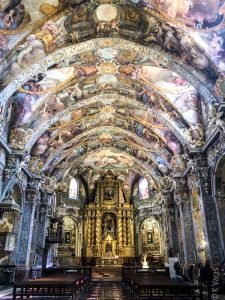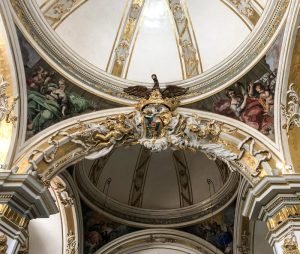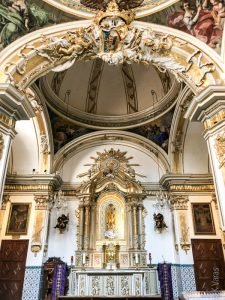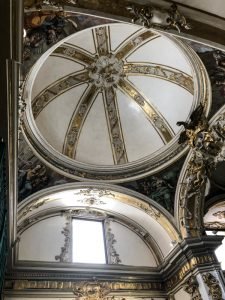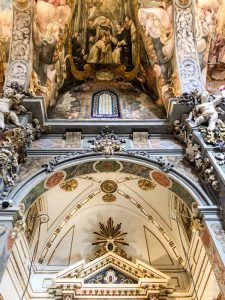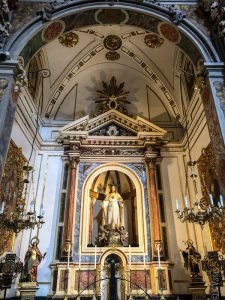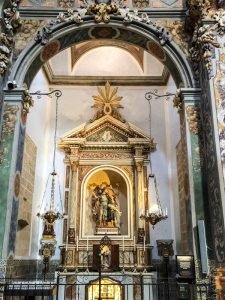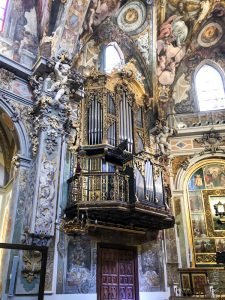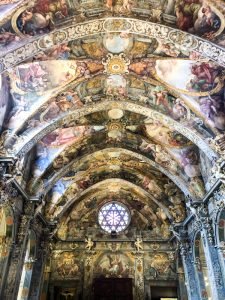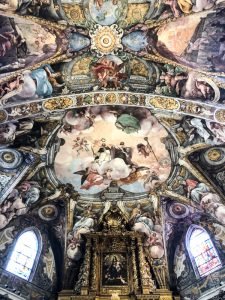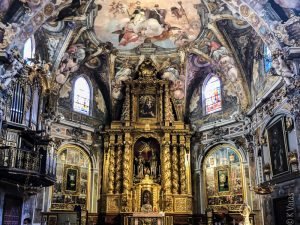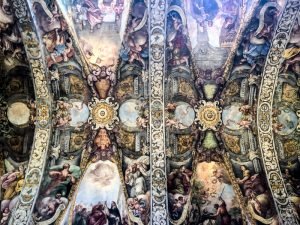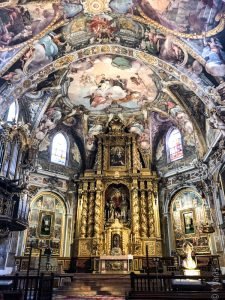
San Nicolás
First we saw Valencia’s little Alhambra (Anna), then we saw Valencia’s Little Venice (Port Saplaya), now it was time to finally see Valencia’s own Sistine Chapel: Sant Nicolau de Bari, or Parroquia de San Nicolás de Bari y San Pedro Mártir (Spaniards like long names). I have walked by the little corridor that leads from Carrer del Cavallers (one of the main streets in my area of La Seu) many times and each time I looked over there, I told to myself to go in there one of these days. Finally, thanks to Ewa, that time has finally arrived.
The city is still in a major lockdown so there is little for us to do other than wonder through old buildings. We got lucky that for our €8 (which I consider quite steep just to see a church) we got tickets for not only San Nicolás but also Museu de la Seda (the Silk Museum) and another church, Església de Sant Joan del Mercat, as part of the entrance fee, and, best of all, we could go see those whenever we wanted. Unfortunately the Silk Museum is currently closed but as soon as it opens again, we already have tickets for it.
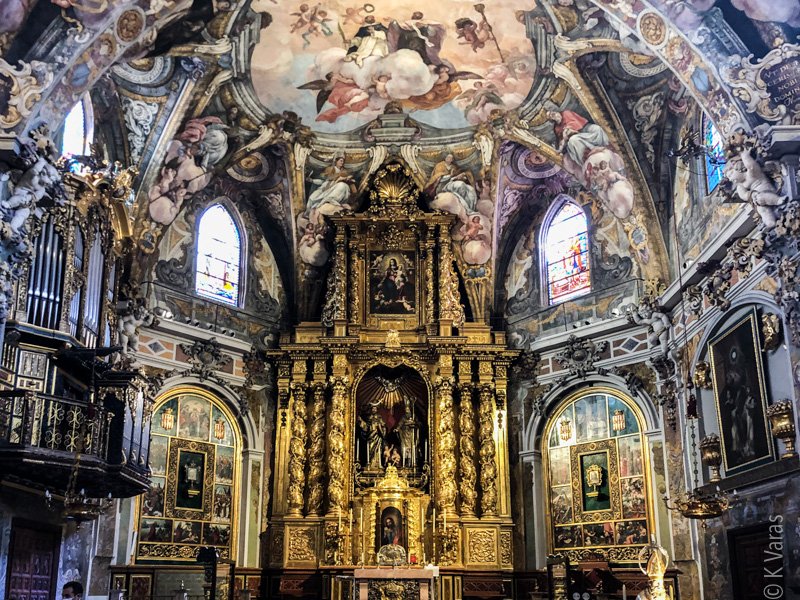
As I mentioned earlier, the entrance to the church is hidden away so when we stepped inside the church the first sounds that came out of us were “wow” … and deservedly so. When people said this was similar to the Sistine Chapel, they were not kidding; though I’ve never had the pleasure of being inside the original myself, what I’d seen in photos assures me that the Valencian version is pretty damn good too. The whole of the church is covered in frescos telling various stories of the two saints it is dedicated to: San Nicolás Obispo and San Pedro Mártir. The ceiling, which is really spectacular, is split evenly between the two saints, too.

The building itself has been around for a very long time, the foundations originating in the time of the Romans though the walls of the church, as it stands today, date to the times of King James I of Aragon, so the XIII century. For most of its life it was a sturdy gothic structure and it wasn’t until the late XVII century that its decor was much improved. Between 1690 and 1693 the gothic interior was covered with baroque decoration according to the taste of the time. The frescos were designed by Antonio Palomino and executed by his disciple Dionís Vidal in 1700 who covered the gothic vaults, pillars, and walls with scenes from the life of the two patron saints.
The church was victim to bombings during the Spanish Civil War but after being declared a Monumento Histórico Artístico Nacional (National Historic Artistic Monument), major restorations brought it back to its former glory. It now draws visitors from around the world while being a community parish. Those wanting to just see it, pay to get in; those who want to attend mass, don’t.
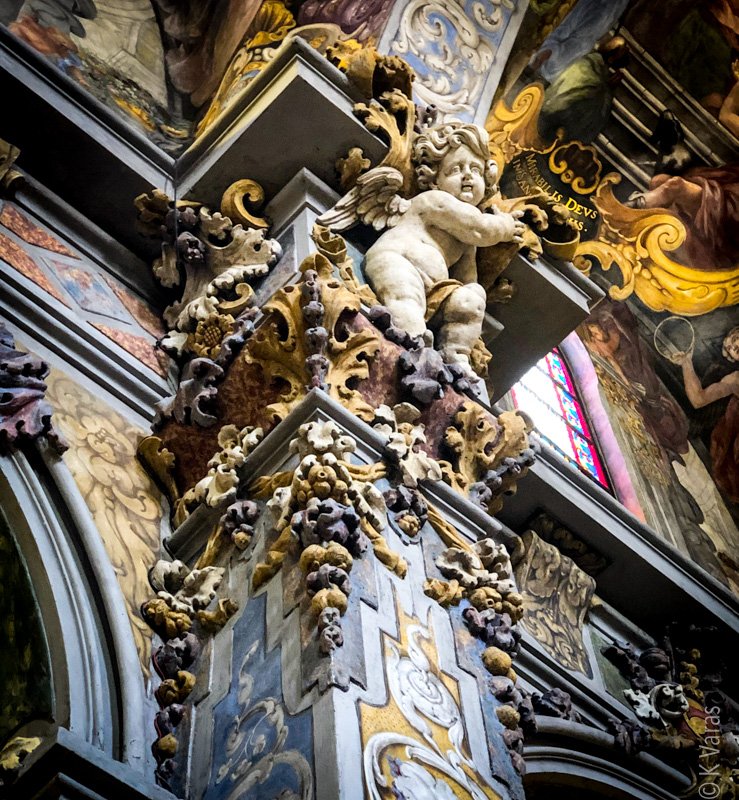
The audio tour took us around from chapel to chapel, telling us stories and what to look for, but I have to admit, I have a very difficult time remembering much of it–I’m a visual learner; if you want me to remember anything, write it down–there were just too many painted scenes of too many saints doing too many things. I couldn’t possibly keep all that straight. What I always find interesting when confronted with baroque decorations is how over-the-top it all is but even I, lover of modern and minimalist design, still think it is all really quite beautiful. I think it’s the craftsmanship and attention to detail that I like so I have to tip my hat to the restorers who I know must have had quite a massive job bringing life back to the frescos so badly damaged by age and wars. Well done!
